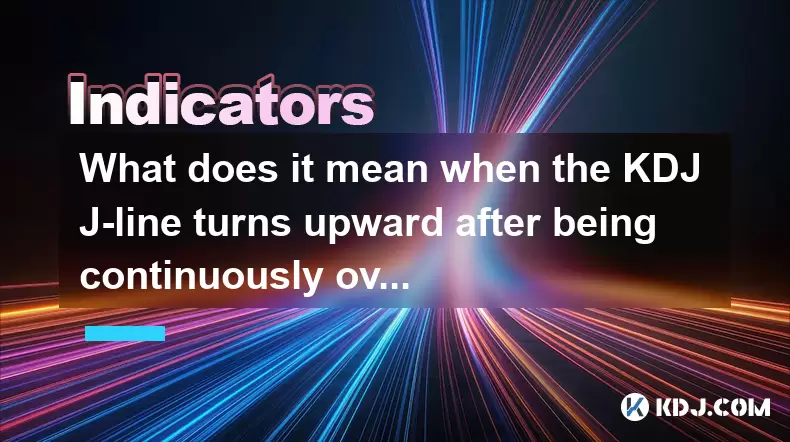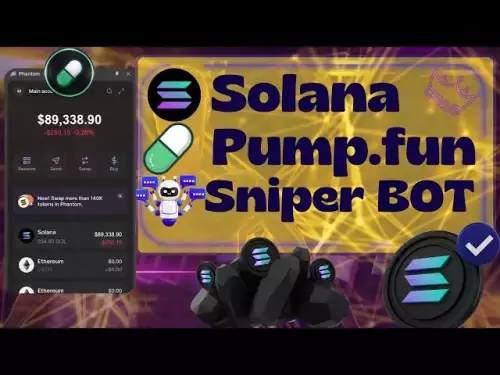-
 Bitcoin
Bitcoin $115100
-1.30% -
 Ethereum
Ethereum $4758
-1.70% -
 XRP
XRP $3.027
-2.19% -
 Tether USDt
Tether USDt $0.9998
-0.01% -
 BNB
BNB $883.2
-1.42% -
 Solana
Solana $204.0
2.62% -
 USDC
USDC $1.000
0.02% -
 Dogecoin
Dogecoin $0.2371
-0.97% -
 TRON
TRON $0.3612
-1.24% -
 Cardano
Cardano $0.9128
-2.19% -
 Chainlink
Chainlink $26.13
-3.93% -
 Hyperliquid
Hyperliquid $44.73
0.90% -
 Sui
Sui $3.715
-0.56% -
 Stellar
Stellar $0.4153
-2.41% -
 Ethena USDe
Ethena USDe $1.000
-0.04% -
 Bitcoin Cash
Bitcoin Cash $588.9
-2.06% -
 Avalanche
Avalanche $25.91
3.27% -
 Hedera
Hedera $0.2525
-1.45% -
 Litecoin
Litecoin $120.9
-1.35% -
 UNUS SED LEO
UNUS SED LEO $9.607
0.30% -
 Toncoin
Toncoin $3.382
-0.31% -
 Shiba Inu
Shiba Inu $0.00001329
-0.38% -
 Uniswap
Uniswap $11.38
-1.67% -
 Polkadot
Polkadot $4.222
2.83% -
 Aave
Aave $354.5
4.93% -
 Dai
Dai $0.0000
0.00% -
 Bitget Token
Bitget Token $4.704
-1.49% -
 Cronos
Cronos $0.1565
1.83% -
 Ethena
Ethena $0.7463
1.55% -
 Monero
Monero $265.8
-0.39%
What does it mean when the KDJ J-line turns upward after being continuously overbought?
When the KDJ's J-line turns upward after being overbought, it may signal renewed bullish momentum in crypto, especially if confirmed by volume and price action.
Aug 13, 2025 at 11:35 am

Understanding the KDJ Indicator in Cryptocurrency Trading
The KDJ indicator is a momentum oscillator widely used in cryptocurrency technical analysis to identify overbought and oversold conditions. It consists of three lines: the K-line, the D-line, and the J-line. The K-line represents the raw momentum, the D-line is a smoothed version of the K-line, and the J-line is a derivative of the K and D lines, calculated as:
J = 3 × K – 2 × D.
This makes the J-line more sensitive to price movements, often acting as an early signal for trend reversals or continuations. When traders observe the J-line turning upward after a prolonged overbought phase, it suggests a potential shift in market momentum despite extended bullish conditions.
Defining Overbought Conditions in KDJ
In the KDJ framework, values above 80 are generally considered overbought, indicating that the asset may be overvalued and due for a pullback. However, in strong uptrends—common in volatile cryptocurrency markets—overbought conditions can persist for extended periods. The key insight lies not in the mere presence of overbought readings, but in the behavior of the J-line during and after such phases. A continuously overbought J-line reflects sustained buying pressure, but when it begins to turn upward after already being above 80, it may signal renewed momentum rather than exhaustion.
Interpreting the J-Line’s Upward Turn Post-Overbought
When the J-line turns upward after being continuously overbought, it often indicates that bullish momentum is regaining strength following a brief consolidation or pullback within an uptrend. This pattern can be interpreted in multiple ways depending on context:
- Bullish continuation signal: If the price is still making higher highs and the J-line rebounds from near or above 80, it may suggest that buyers are re-entering the market, reinforcing the uptrend.
- Divergence observation: If the price fails to make a new high while the J-line turns up, this could indicate weakening momentum and a potential reversal.
- Market sentiment shift: A sharp upward turn in the J-line after overbought levels may reflect renewed FOMO (fear of missing out) among traders, especially during news-driven rallies in crypto assets.
The timing and price action surrounding the J-line’s movement are critical. Traders should examine whether the upward turn coincides with increased volume or breakout patterns on the price chart.
How to Confirm the Signal Using Additional Tools
To avoid false signals, traders should not rely solely on the KDJ J-line. Confirmation from complementary indicators enhances reliability:
- Volume analysis: Check if rising volume accompanies the J-line’s upward turn. Increased trading volume supports the validity of renewed momentum.
- Moving averages: Observe whether the price is trading above key moving averages like the 50-period or 200-period EMA. Alignment with these averages strengthens the bullish case.
- RSI (Relative Strength Index): Cross-verify with RSI. If RSI is also rising from overbought levels or showing bullish divergence, the signal gains credibility.
- Candlestick patterns: Look for bullish reversal patterns such as hammer, bullish engulfing, or morning star near the time of the J-line turn.
For example, on a Bitcoin 4-hour chart, if the J-line dips slightly from 90 to 85 and then sharply turns upward while volume spikes and a bullish engulfing candle forms, this confluence increases the probability of a continuation.
Step-by-Step Guide to Monitoring the J-Line in TradingView
To effectively track the KDJ J-line on a cryptocurrency chart using TradingView, follow these steps:
- Open TradingView and load the desired cryptocurrency pair (e.g., BTC/USDT).
- Click on the “Indicators” button located at the top of the chart.
- In the search bar, type “KDJ” and select the KDJ (Stochastic) indicator from the list.
- Adjust the parameters if needed (default is usually 9,3,3 for K-period, D-period, and smoothing).
- Focus on the J-line, typically displayed in a different color (often yellow or green).
- Set visual alerts: Click on the KDJ indicator, go to “Alerts,” and create a condition for “J-line crosses above its previous value” when J > 80.
- Enable price and volume indicators alongside KDJ for context.
This setup allows real-time monitoring of J-line behavior during overbought phases, enabling timely decisions.
Common Misinterpretations and Risk Management
A frequent mistake is assuming that an upward-turning J-line after overbought conditions always means a buy signal. In reality, in parabolic rallies, the J-line can remain overbought for long periods, and premature entries can lead to losses during sudden corrections. To mitigate risk:
- Avoid chasing entries based solely on J-line movement.
- Use stop-loss orders below recent swing lows when acting on the signal.
- Apply position sizing to limit exposure, especially in high-volatility cryptos.
- Watch for whipsaws—the J-line may turn up briefly only to reverse again, particularly in choppy markets.
Additionally, consider the timeframe. On lower timeframes like 15-minute charts, J-line signals are noisier and require stricter filtering.
Frequently Asked Questions
What is the difference between the K, D, and J lines in KDJ?
The K-line reflects the current momentum based on recent price closes. The D-line is a moving average of the K-line, smoothing out fluctuations. The J-line is derived from both and amplifies changes, making it the most volatile and sensitive to price shifts.
Can the J-line stay overbought indefinitely in crypto markets?
Yes. Due to the high volatility and speculative nature of cryptocurrencies, the J-line can remain above 80 for extended periods during strong bull runs, such as during Bitcoin’s 2021 rally. This reflects sustained demand rather than an imminent reversal.
How do I adjust KDJ settings for different crypto timeframes?
For shorter timeframes (e.g., 15m or 1h), consider using KDJ (5,3,3) for faster signals. For daily charts, stick with (9,3,3) or even (14,3,3) to reduce noise. Always backtest changes on historical data before live use.
Does the J-line turning up work the same across all cryptocurrencies?
No. Major coins like Bitcoin and Ethereum tend to exhibit more reliable KDJ patterns due to higher liquidity. Low-cap altcoins with erratic volume may generate false signals, as the J-line can swing violently due to whale trades or pump-and-dump schemes.
Disclaimer:info@kdj.com
The information provided is not trading advice. kdj.com does not assume any responsibility for any investments made based on the information provided in this article. Cryptocurrencies are highly volatile and it is highly recommended that you invest with caution after thorough research!
If you believe that the content used on this website infringes your copyright, please contact us immediately (info@kdj.com) and we will delete it promptly.
- XYZVerse, Shiba Inu, and the 2025 Bull Cycle: A Meme Coin Evolution
- 2025-08-24 13:05:12
- WLFI Token, BingX, and the Trading Landscape: A New York Perspective
- 2025-08-24 12:45:20
- Aave, Governance, Allocation: Navigating DeFi's Shifting Sands
- 2025-08-24 12:45:20
- Crypto Coins in 2025: Meme Coins, Undervalued Blockchains, and Bull Run Predictions
- 2025-08-24 13:05:12
- Fed Pivot Ignites Crypto Rally: Altcoins Set to Outperform?
- 2025-08-24 13:25:12
- Eric Trump, Tokyo, and Metaplanet: A Bitcoin Bonanza?
- 2025-08-24 11:05:13
Related knowledge

What does it mean when the +DI and -DI cross frequently in the DMI indicator but the ADX is flattening?
Aug 11,2025 at 03:15am
Understanding the DMI Indicator ComponentsThe Directional Movement Index (DMI) is a technical analysis tool composed of three lines: the +DI (Positive...

What does the sudden appearance of a "dark cloud cover" candlestick pattern during an uptrend indicate?
Aug 13,2025 at 11:35am
Understanding the 'Dark Cloud Cover' Candlestick PatternThe dark cloud cover is a bearish reversal pattern in technical analysis that typically appear...

What does it mean when the moving average, MACD, and RSI all send buy signals simultaneously?
Aug 11,2025 at 01:42pm
Understanding the Convergence of Technical IndicatorsWhen the moving average, MACD, and RSI all generate buy signals at the same time, traders interpr...

What does it mean when both the KDJ indicator and the RSI show overbought signals simultaneously?
Aug 13,2025 at 11:35am
Understanding the KDJ Indicator in Cryptocurrency TradingThe KDJ indicator is a momentum oscillator derived from the Stochastic Oscillator, widely use...

What does it mean when the price is trading above the SAR indicator but the red dots are densely packed?
Aug 09,2025 at 11:49pm
Understanding the SAR Indicator and Its Visual SignalsThe SAR (Parabolic Stop and Reverse) indicator is a technical analysis tool used primarily to de...

What does it mean when the candlestick chart forms a "Morning Star" but trading volume is sluggish?
Aug 12,2025 at 06:28pm
Understanding the Morning Star Candlestick PatternThe Morning Star is a three-candle bullish reversal pattern commonly observed in cryptocurrency pric...

What does it mean when the +DI and -DI cross frequently in the DMI indicator but the ADX is flattening?
Aug 11,2025 at 03:15am
Understanding the DMI Indicator ComponentsThe Directional Movement Index (DMI) is a technical analysis tool composed of three lines: the +DI (Positive...

What does the sudden appearance of a "dark cloud cover" candlestick pattern during an uptrend indicate?
Aug 13,2025 at 11:35am
Understanding the 'Dark Cloud Cover' Candlestick PatternThe dark cloud cover is a bearish reversal pattern in technical analysis that typically appear...

What does it mean when the moving average, MACD, and RSI all send buy signals simultaneously?
Aug 11,2025 at 01:42pm
Understanding the Convergence of Technical IndicatorsWhen the moving average, MACD, and RSI all generate buy signals at the same time, traders interpr...

What does it mean when both the KDJ indicator and the RSI show overbought signals simultaneously?
Aug 13,2025 at 11:35am
Understanding the KDJ Indicator in Cryptocurrency TradingThe KDJ indicator is a momentum oscillator derived from the Stochastic Oscillator, widely use...

What does it mean when the price is trading above the SAR indicator but the red dots are densely packed?
Aug 09,2025 at 11:49pm
Understanding the SAR Indicator and Its Visual SignalsThe SAR (Parabolic Stop and Reverse) indicator is a technical analysis tool used primarily to de...

What does it mean when the candlestick chart forms a "Morning Star" but trading volume is sluggish?
Aug 12,2025 at 06:28pm
Understanding the Morning Star Candlestick PatternThe Morning Star is a three-candle bullish reversal pattern commonly observed in cryptocurrency pric...
See all articles

























































































